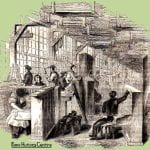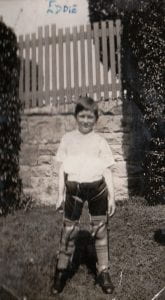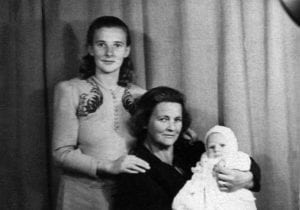So, the theme for week 7 of #52ancestors is Love. It was suggested on the weekly post that this doesn’t have to mean romantic love it could mean an ancestor you love to research or someone with a ‘love’ name. So, for me I’ve chosen to focus on two ancestors this week (who were a couple) that I love researching.
My fourth great grandfather David Hartley (aka Harknett) is one of my favourite ancestors and I love researching his life. David was one of the very first ancestors I ever researched, and I had heard a lot about him for most of my life. My mum’s uncle had done a great deal of research on his family which started in Australia with David. After the death of my grandmother, my mum decided she would like to find out some more about David and his origins. So, we scraped together the information that we had, which wasn’t all that much.
We knew from my great-uncle’s research the general time that he came to Australia and it was suggested that he may have been a convict but my mum had always been told by her grandmother that he was a ship’s captain. Well, with this scant information we actually found something after hours of searching: David was in fact a convict who was sentenced to 14 years transportation. So then, where did the story of the ship’s captain come in?
Obviously, David’s convict past was meant to be covered up. At the time, we kind of shrugged it off as some story that had been made up by the story as a way of hiding the fact that David arrived here as a convict. However, after a bit more digging we found where the story actually came from. To understand where this story came from and how we found out where it came from, I first need to discuss a bit about David’s life in Australia.
So, after being in the colony of New South Wales for a few years David was married. He was still serving his 14 year sentence at the time of his marriage, which in itself isn’t unusual as many serving convicts were married and it was encouraged as a way of creating a civilised society. However, what was unusual was the woman he married. His wife was one Elizabeth Grono who was a free woman, who had been born in England and came to Australia as a free person. Many individuals came to the colony free, either associated with the army/navy or to be with convict parents or relatives.
Elizabeth’s father was a Captain John Grono, who was a reasonably prominent man in the colony. He was an early settler of the Hawkesbury region and was a founding member of Ebenezer Church in the Pitt Town area (this was the first Presbyterian Church outside of Sydney and is currently the oldest surviving church in Australia). On his property, which fronted the Hawkesbury Rover, John Grono ran his shipbuilding business. this bought him into close contact with important members of the early colony such as Governor Bligh.
So, this is where I and the rest of my family believe the story of David Hartley being a ship’s captain came from. David has always fascinated me and continues to do so which makes him an ancestor I love to research. I also like to believe that David and Elizabeth were a true love match, as it would have been a big step down from visiting the Governor’s residence as a guest to marrying a convict who worked on the governor’s property. At the same time, there is a sadness to the story as it appears that Elizabeth was completely cut off by her family. Her sisters all married free men who were bought into their father’s business and made wealthy men. They are all also buried in the family vault at Ebenezer Church.
In sharp contrast, Elizabeth is buried in an unmarked grave at Pitt Town along with her husband David. David was also obviously not brought into the shipbuilding business as the copious amount of writing on John Grono and his shipbuilding business don’t mention him at all. In fact, in the majority of the writings on John Grono Elizabeth and her convict husband are not mentioned.













